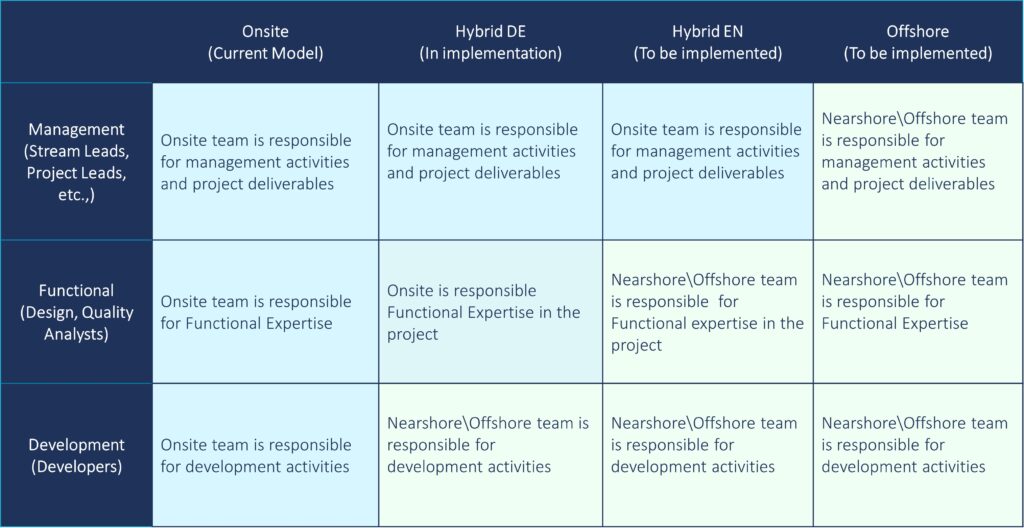
The Power of Automation in Data Migration
Automation is a practical solution to speed up and optimize the entire data migration process
The migration to SAP S/4HANA is at the forefront of organizations’ minds. The benefits are promising, but the challenges and financial investments should not be underestimated. Migration projects often significantly exceed their initial budget. In the worst-case scenario, this results in significant financial losses for companies, with failed projects costing millions of euros. In this blog post, we discuss the challenges and costs of SAP S/4HANA migrations and present a cost-effective model for a smooth and successful data migration.
Migrating to SAP S/4HANA is undoubtedly a crucial step for companies on their digital transformation journey. However, the promising opportunities also conceal challenges and significant financial investments.
According to current information and statistics, about 50% of S/4HANA migration projects face difficulties and are considered to have failed. This rate illustrates that the transition to the new system is not without its pitfalls and requires careful planning and a comprehensive strategic approach.
The cost of an S/4HANA migration varies greatly and can vary significantly depending on the size of the company and the complexity of the requirements. Smaller companies with less complex structures may expect costs in the hundreds of thousands of euros, while larger organizations with complex processes and extensive data migrations may have to invest amounts in the range of several million euros.
Especially for large corporations and market leaders, the cost of an S/4 HANA migration can be up to five hundred million euros or more. These enormous sums illustrate companies’ financial challenges to take full advantage of the S/4HANA system.
A case study of this is the S/4HANA project of a well-known retail group, which was unsuccessful. The introduction of a new ERP system cost five hundred million euros and took seven years. This experience highlights the complexity of such implementation projects and the need to introduce effective strategies to keep both time and cost factors under control.
However, there are models and approaches that deal with the challenges and costs of migration projects. In the following, we will introduce an example and show how this model helps address the challenges of S/4HANA migrations while ensuring financial efficiency.
To successfully address the challenges of migration projects, Camelot’s Best Price Delivery Model is an innovative and cost-effective model based on clear roles and targeted expertise.

To ensure our quality standards, we rely intensively on continuous training of our colleagues. In addition, we develop a comprehensive migration strategy that enables the standardization of projects through the creation of a Global Delivery Template, guided by SAP best practices approaches and the SAP Activate methodology. Moreover, we pay special attention to the use of our Hyperautomation Platform, which automates migration work and thus makes it much more efficient. This template forms the basis for efficient management and implementation of projects.
Camelot’s Global Delivery Approach is a strategic approach that enables a balanced integration of onshore and offshore elements in migration projects. There are several benefits to this method that help organizations execute their migration projects efficiently and cost-effectively.
Impressive cost-efficiency is achieved through the clever use of nearshore and offshore resources. Decentralizing tasks in regions with cheaper labor allows for significant cost savings without sacrificing quality. This helps to make the most of the budget.
The application of teams in different time zones creates remarkable temporal flexibility. Continuous round-the-clock work coverage accelerates the project process, resulting in shortened project timelines. This temporal agility is particularly advantageous in dynamic migration projects.
The expertise and diversity of global talent pools made accessible through this strategy allow companies to access a wide range of skills and expertise. As a result, the project team can be optimally adapted to the specific requirements.
However, despite these benefits, there are some challenges to consider. Communication challenges due to physical separation require a clear and effective communication strategy to minimize misunderstandings. Coordination and collaboration between onshore and offshore teams require careful planning and structuring, as different working methods and schedules can make effective collaboration difficult. In addition, cultural differences can be an additional hurdle that could hinder harmonious teamwork.
Overall, Camelot’s Global Delivery Approach enables an effective and cost-efficient implementation of migration projects. However, thorough planning and thoughtful management are required to successfully overcome the challenges and reap the full benefits of this innovative strategy.
We would like to thank Duy Tran for his valuable contribution to this article.

Automation is a practical solution to speed up and optimize the entire data migration process

Discover how you can streamline your financial master data management and reengineer financial processes with SAP MDG Finance.

Whilst it seems straightforward to carry out either a blood transfusion or a data migration, the actuality proves far more complex.

In this blog article, Camelot introduces you to the main principals of Demand-Driven Supply Chain Management.